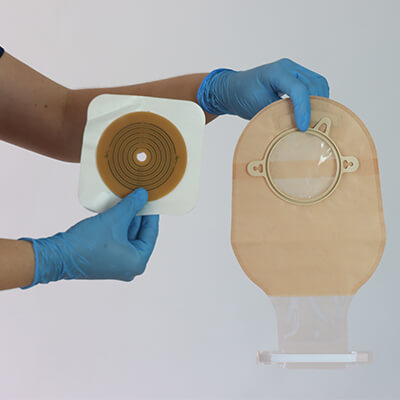Living with an ostomy can be a life-changing experience, but having the right medical equipment can make all the difference in your comfort and independence. This comprehensive guide will walk you through the various types of ostomy bags, accessories, and expert tips for choosing the perfect products to support your unique lifestyle. By understanding the essential medical equipment required for your journey, you'll be better equipped to manage your ostomy and achieve optimal health outcomes.
Understanding Ostomy Care
Before diving into the types of ostomy bags and accessories, it's essential to understand what ostomy care involves. Ostomy care is the management of a stoma – an opening on the body that allows waste to be eliminated – which is created during surgery for conditions such as Crohn’s disease, ulcerative colitis, or bladder cancer. The primary goal of ostomy care is to maintain hygiene and prevent complications while ensuring the patient's comfort.
The Different Types of Ostomy Bags and Their Uses
There are two main types of ostomy bags: drainable and closed-end pouches. Each type serves a specific purpose and caters to different individual needs.
- Drainable Pouches: These bags are designed for collecting ostomy waste, allowing the user to periodically drain them. They're typically made of transparent material, enabling easy monitoring of the stoma and making it simple to determine when emptying is needed. Drainable pouches come in various sizes and shapes, so it’s essential to find the right fit for your individual comfort.
- Closed-End Pouches: These bags are one-piece systems that contain the waste within the pouch. They're especially useful during the healing process post-surgery or when a person has a low output of waste. Closed-end pouches provide a secure feeling and help to minimize leaks, but they require more frequent changes compared to drainable pouches.
Essential Medical Equipment for Ostomy Care
- Ostomy Pouching Systems: These systems consist of a base plate and a collection pouch, designed to accommodate the unique shape and size of each individual's stoma. The base plate adheres to the skin, while the pouch attaches to it to collect waste. There are various types of pouching systems available, including cut-to-fit and pre-cut options.
- Skin Barrier Wafers: These wafers form a barrier between the skin and the ostomy bag, protecting the skin from irritation and ensuring a secure fit. They're made with different adhesive types to cater to individual sensitivity levels and are available in various shapes and sizes.
- Adhesive Patch Plasters: Sometimes, additional adhesive is needed to ensure the base plate stays securely in place. These patch plasters can be used on the peristomal skin around the stoma for extra support.
- Drainable Pouches: As mentioned earlier, these bags are designed to allow users to periodically drain them. They connect to the ostomy pouching system and come in various sizes and shapes.
- Closed-End Pouches: This type of pouch is a one-piece system that's attached directly to the stoma. They provide a snug fit, ensuring waste stays contained within the pouch.
- Ostomy Accessories: There are numerous accessories available to help make ostomy care more comfortable and manageable. Some examples include:
- Nighttime or Swim Ostomy Pouches: Specially designed pouches for use during sleep or water-based activities, offering extra security and comfort.
- Deodorant Pads: These pads can be used inside the ostomy bag to neutralize odors, providing a fresher smell and improved confidence.
- Belts, Covers, and Extenders: Various accessories are available to help secure the pouching system, provide added comfort, or offer a more discreet appearance.
- Ostomy Pastes & Powders: These products can be used to help reduce skin irritation and create a better seal between the base plate and the skin.
- Washable Pants and Underwear: Specially designed garments help provide additional security, comfort, and discretion for ostomy pouching systems.
Tips for Choosing the Right Equipment and Accessories
- Consult with Your Healthcare Team: Your healthcare team – including surgeons, nurses, and wardens – will have valuable insights on what equipment and accessories are best suited for your specific situation. Always seek their advice when selecting ostomy products.
- Try Different Products: Don't be afraid to try different products. You might be surprised by how many options there are, and you never know which ones could make a difference in your life.
- Consider Your Lifestyle: Think about the activities you participate in daily or enjoy on weekends. If you play sports that require running, consider an ostomy pouch with a secure attachment so it doesn't move around during the exercise.
- Keep Comfort in Mind: While cost can be a factor, remember to prioritize your comfort and well-being over price. You'll be using these products every day, and they should cater to your needs.
- Experiment with Sizes and Types: Trying out various sizes, shapes, and types of ostomy products will help you understand what fits best for you.
Managing an ostomy may seem like a daunting task initially, but with the right medical equipment, accessories, and guidance from your healthcare team, you'll soon discover that it significantly improves the quality of life for those living with an ostomy. Always prioritize your comfort when choosing products, as you'll be using them daily.
In conclusion, understanding the different types of ostomy bags available and how to choose the right medical equipment is essential in making the process of managing an ostomy more comfortable. Remember that your healthcare team will always have valuable insights on which products are best suited for your specific situation. Always prioritize comfort when choosing products as you'll be using them daily, and don't hesitate to try different sizes and types to find what fits best for you.

